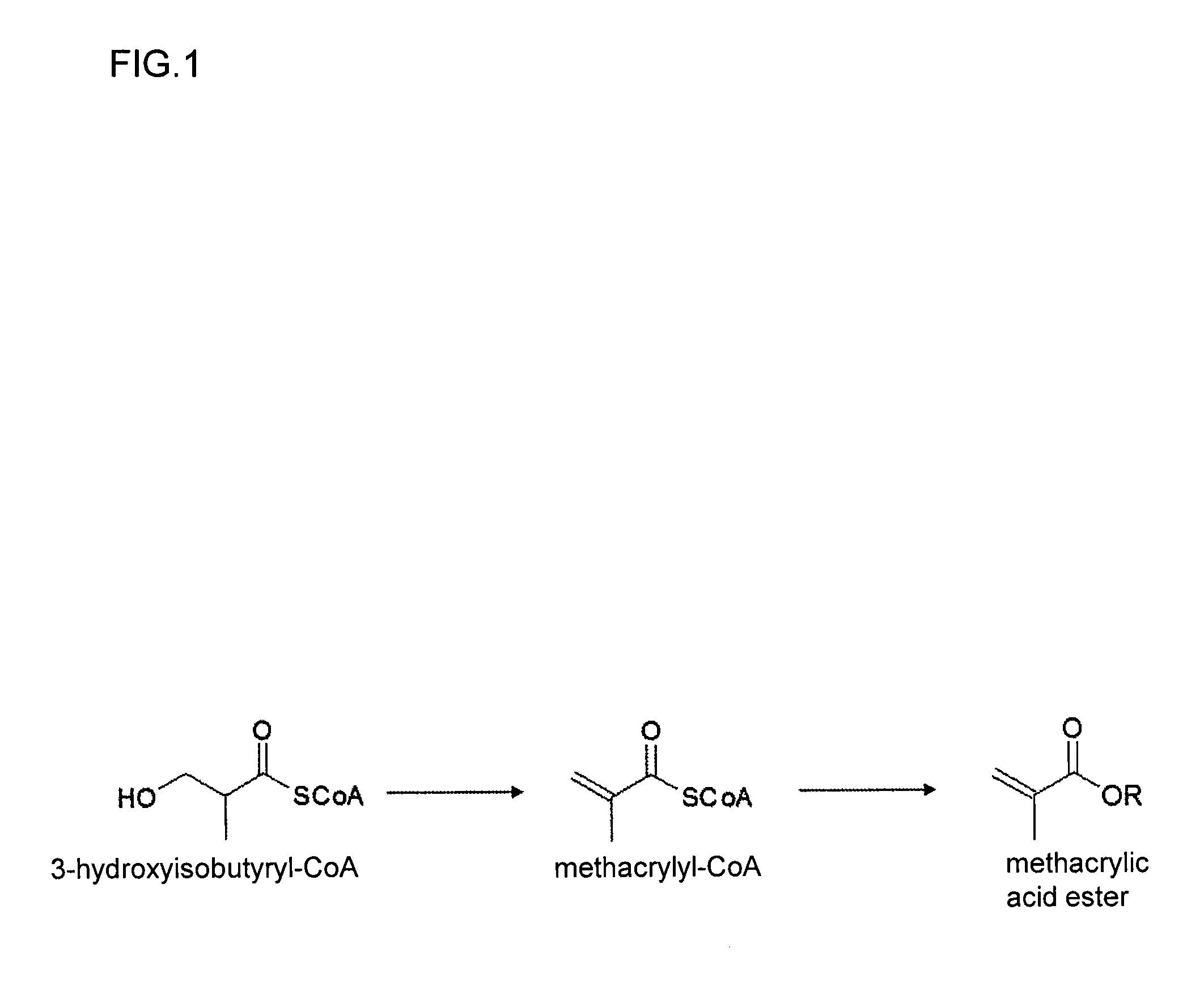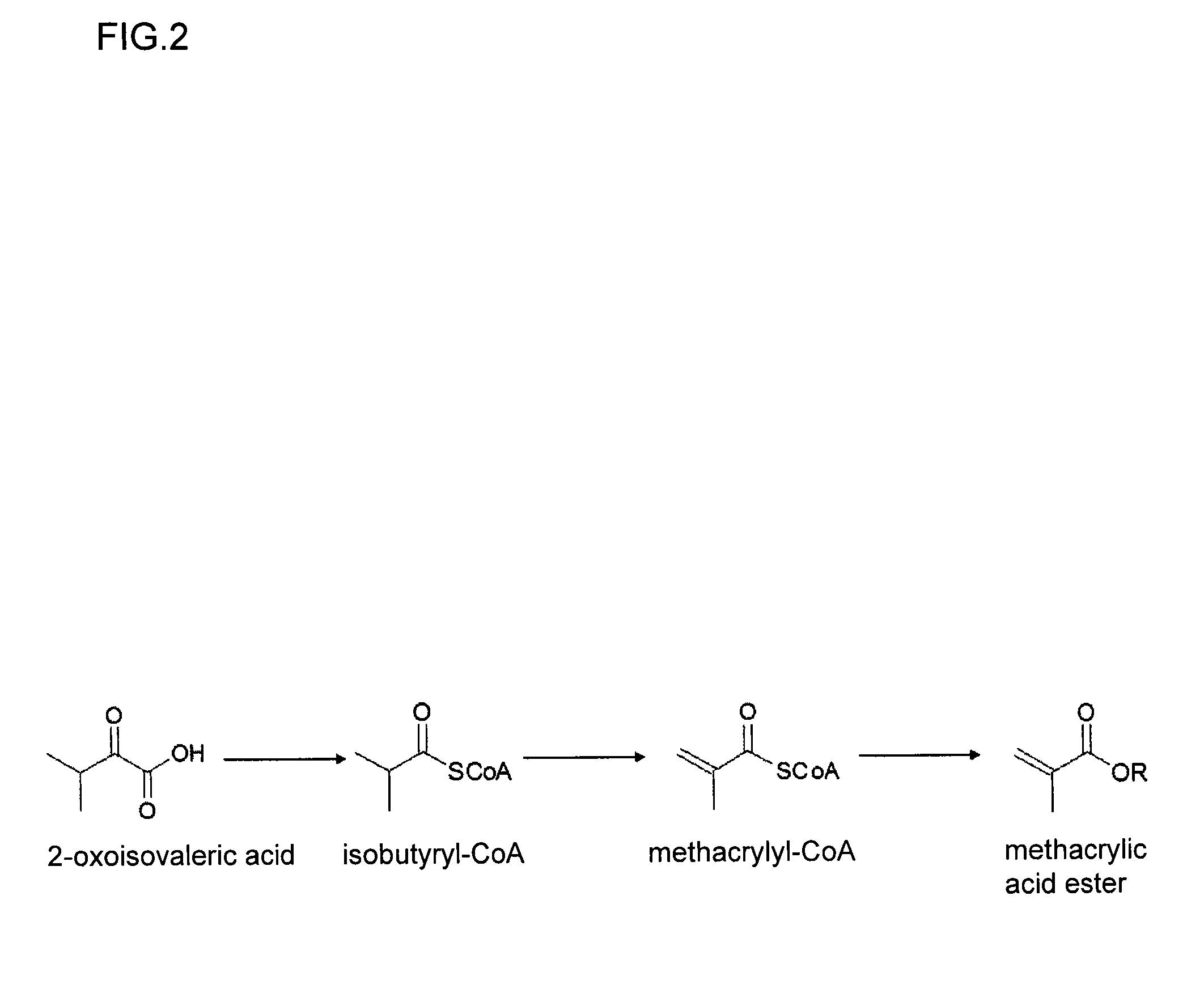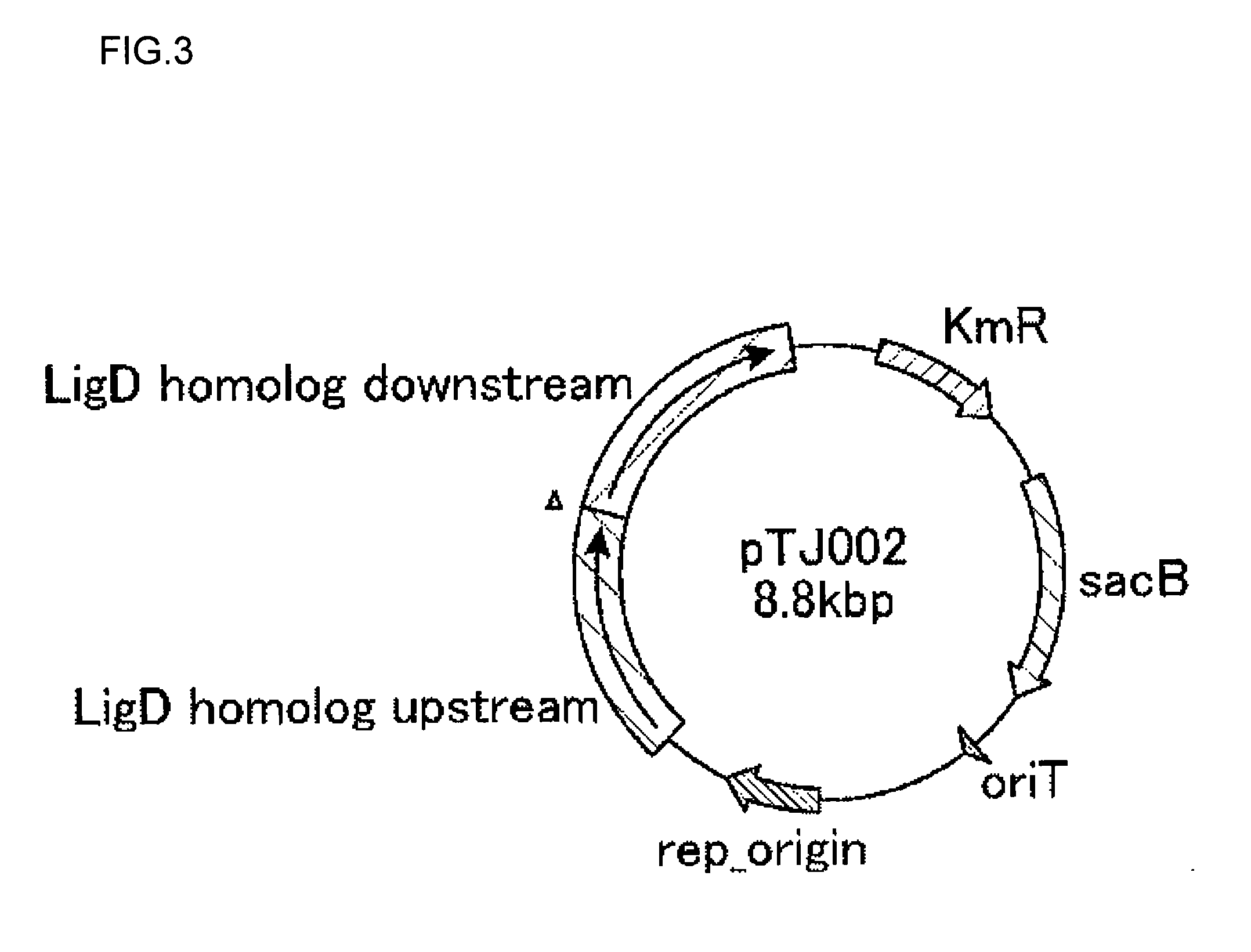Method for producing methacrylic acid ester
a technology of methacrylic acid and ester, which is applied in the direction of acyltransferases, enzymology, transferases, etc., can solve the problems of unfavorable production methods, large energy requirements, and inability to produce, so as to achieve the effect of efficiently producing methacrylic acid ester and reducing energy, resources and load on the environmen
- Summary
- Abstract
- Description
- Claims
- Application Information
AI Technical Summary
Benefits of technology
Problems solved by technology
Method used
Image
Examples
example 1
Synthesis of Isobutyl Methacrylate
[0160]The skin of a banana was removed, the sarcocarp was sliced to about 1 millimeter thickness with a cutter, and this was further divided into four. Two grams of sliced banana, 2 ml of a solution containing 2.3 mM methacrylyl-CoA and 0.35 M of KCl and 5 μl of isobutyl alcohol were added in order to a 100 ml flask. It was sealed and allowed to react at 30° C. The reaction mixture containing Isobutyl methacrylate formed after 1, 2 or 3 hours was collected in a 100 ml flask with 150 μl of head space, and analysis was performed with the GC conditions below. The results thereof are shown in Table 1.
TABLE 1Generated amount of isobutyl methacrylateTimeGenerated amount of isobutyl methacrylate (mM)10.1920.3830.45
GC Analysis Conditions
[0161]column: DB-WAX, 30 m×0.32 mm
[0162]column temperature: 50° C.·5 min->5° C. / min->100° C. (15 min total)
[0163]carrier gas: He
[0164]inject: 200° C. splitless (sampling time 1 min)
[0165]detect: 250° C. FID
[0166]injection vo...
example 2
Synthesis of Butyl Methacrylate
[0168]Except for using n-butyl alcohol in place of isobutyl alcohol, it was conducted similarly to Example 1. The results thereof are shown in Table 2.
TABLE 2Generated amount of butyl methacrylateTimeGenerated amount of butyl methacrylate (mM)20.205.50.30
example 3
Synthesis 2 of Butyl Methacrylate
[0169]Two grams of a plant piece shown in Table 3, 2 ml of a solution containing 2.3 mM of methacrylyl-CoA and 0.35 M KCl and 10 μl of n-butyl alcohol were added in order to a 100 ml flask. It was sealed and allowed to react at 30° C. Analysis of the methacrylic acid ester was conducted similarly to Example 1. The results thereof are shown in Table 3.
TABLE 3Generated amount of butyl methacrylateGeneratedamount ofbutylReactionmethacrylatePlantPart usedtime(mM)StrawberrySliced sacrocarp to about30.0101 mil thicknessKiwiSliced sacrocarp to about50.0121 mil thicknessAppleSliced pericarp to about50.0161 mil thicknessMelonSliced sacrocarp to about60.0151 mil thicknessPearSliced pericarp to about40.0131 mil thicknessPapayaSliced pericarp to about40.0271 mil thicknessAvocadoSliced pericarp to about60.0351 mil thicknessBlueberrySliced pericarp to about60.0091 mil thicknessPrunus mumeSliced pericarp to about40.0021 mil thickness
PUM
| Property | Measurement | Unit |
|---|---|---|
| temperature | aaaaa | aaaaa |
| pH | aaaaa | aaaaa |
| pH | aaaaa | aaaaa |
Abstract
Description
Claims
Application Information
 Login to View More
Login to View More - R&D
- Intellectual Property
- Life Sciences
- Materials
- Tech Scout
- Unparalleled Data Quality
- Higher Quality Content
- 60% Fewer Hallucinations
Browse by: Latest US Patents, China's latest patents, Technical Efficacy Thesaurus, Application Domain, Technology Topic, Popular Technical Reports.
© 2025 PatSnap. All rights reserved.Legal|Privacy policy|Modern Slavery Act Transparency Statement|Sitemap|About US| Contact US: help@patsnap.com



